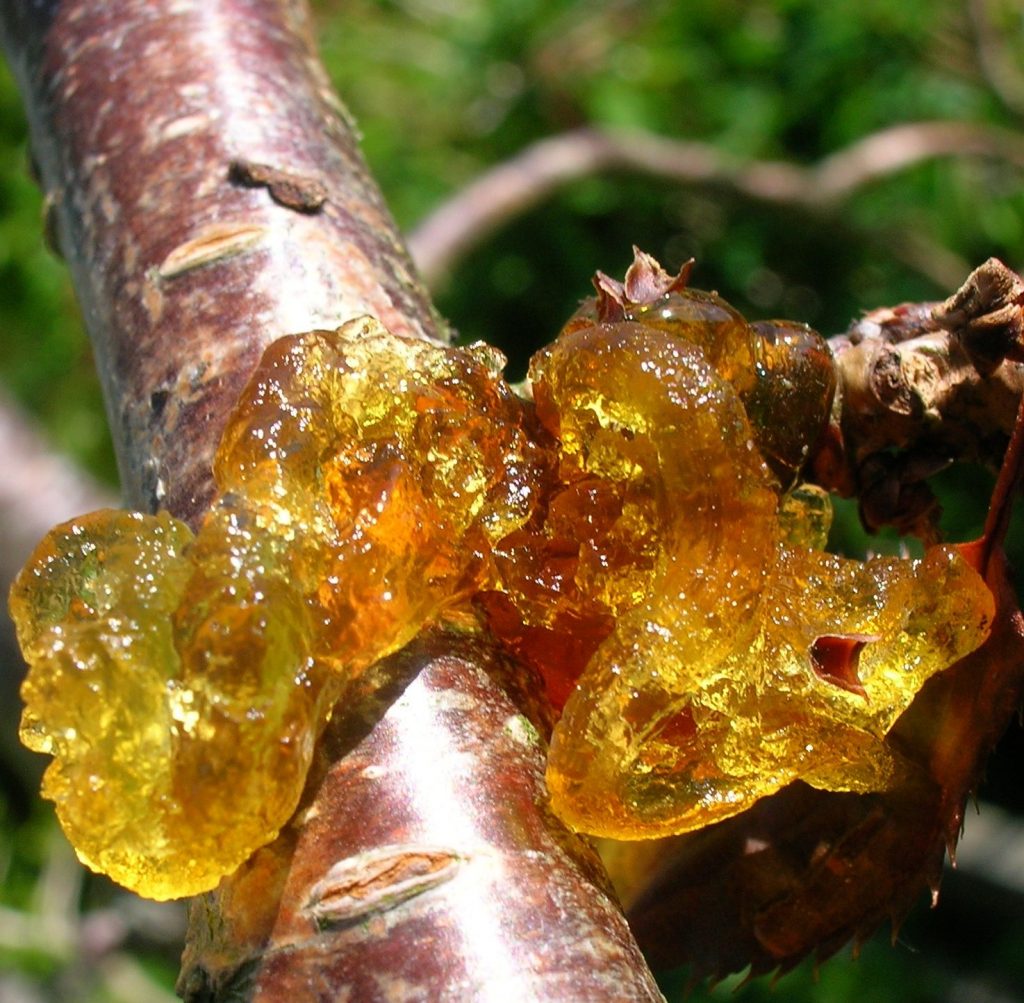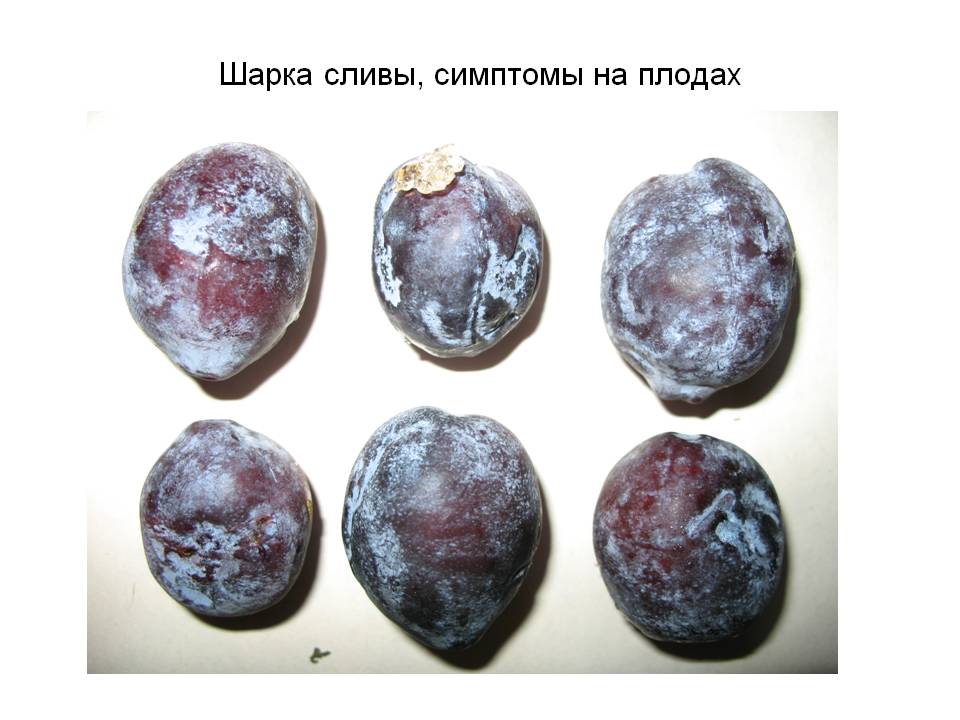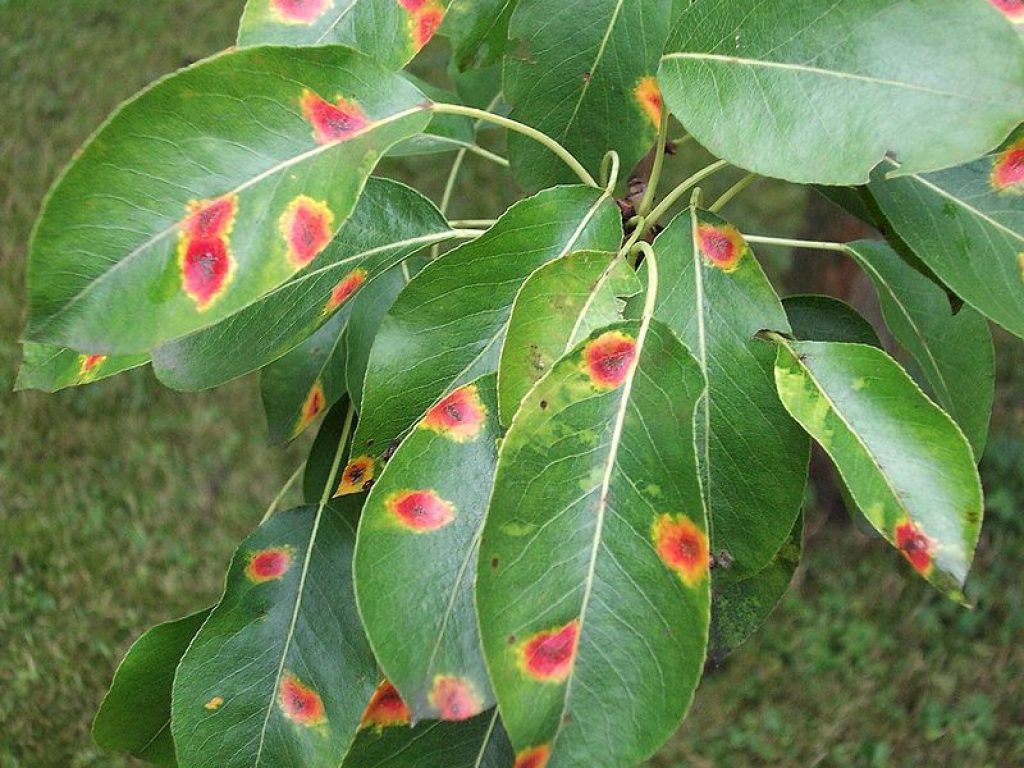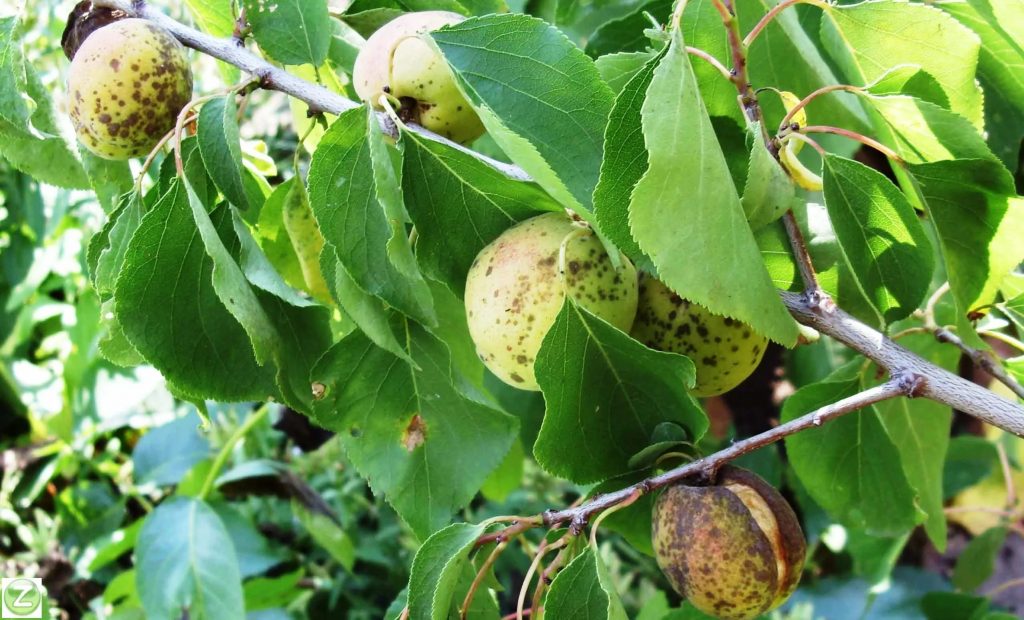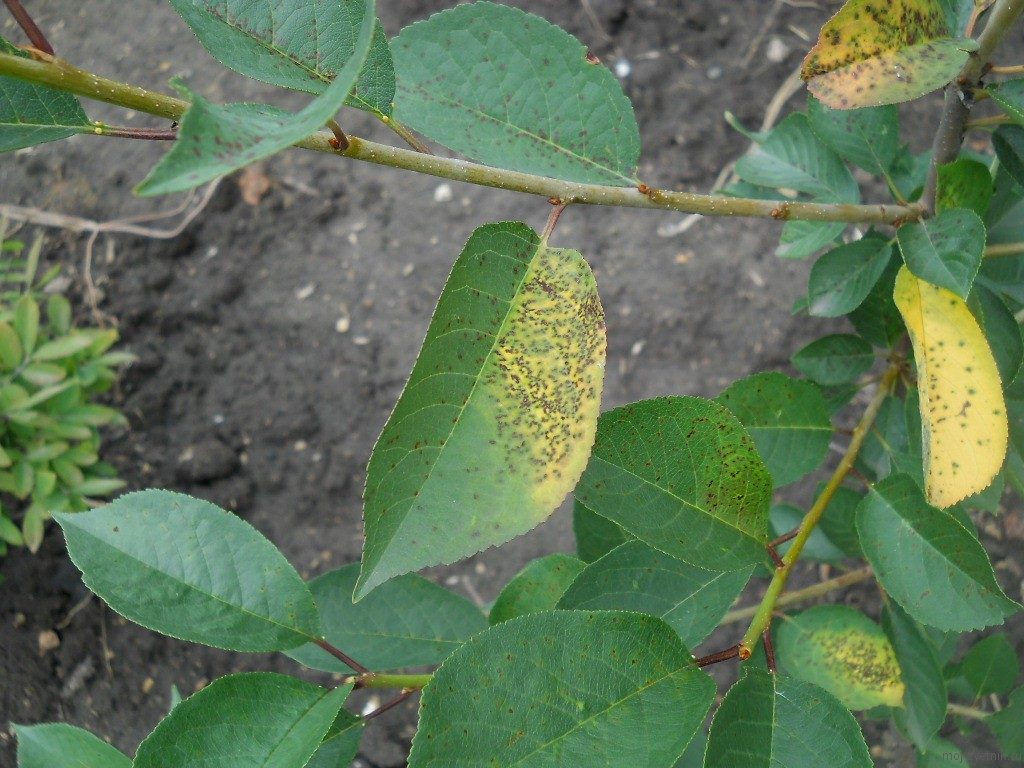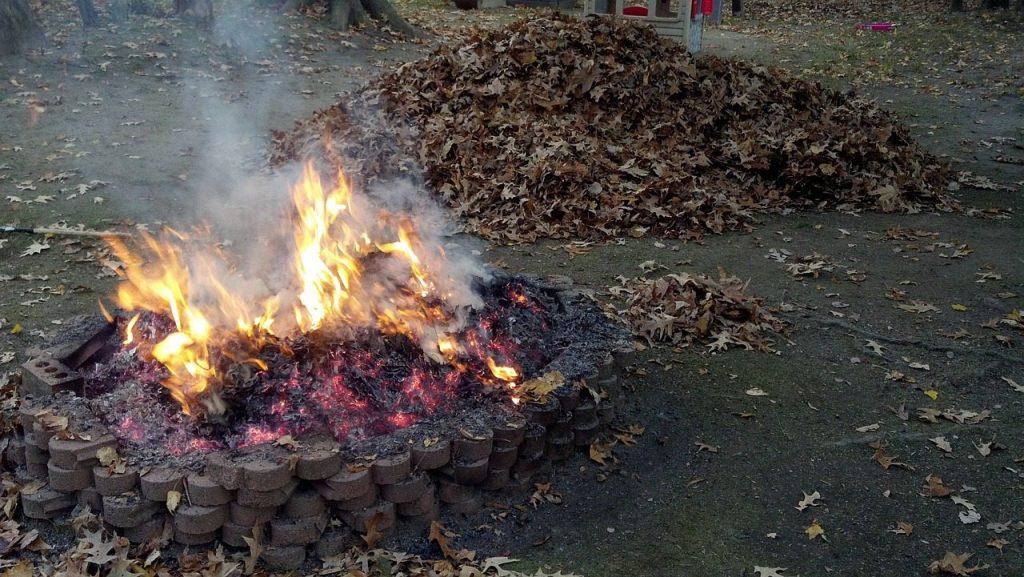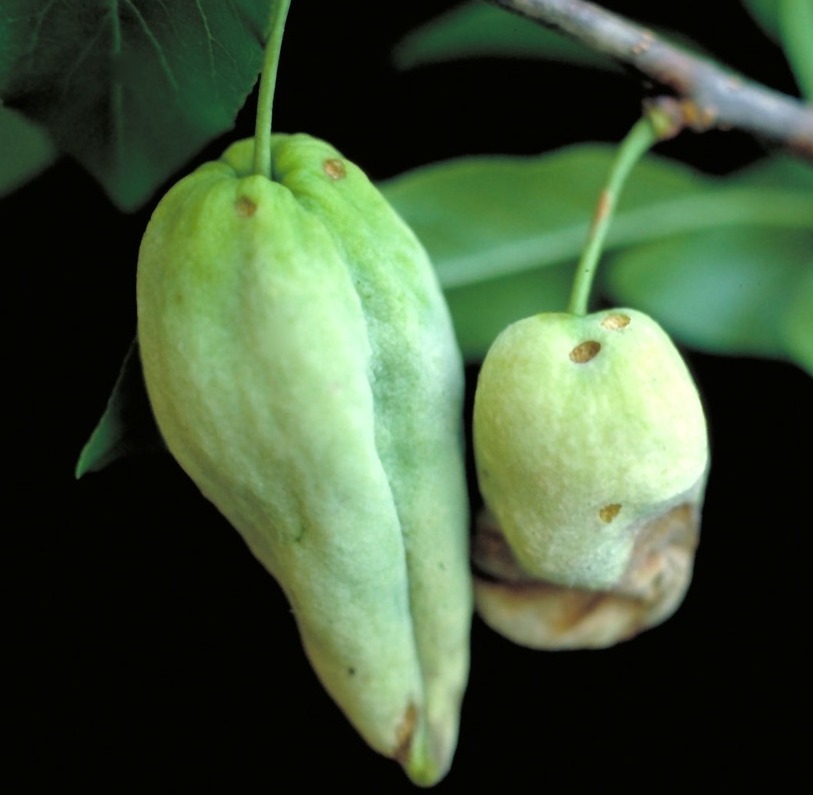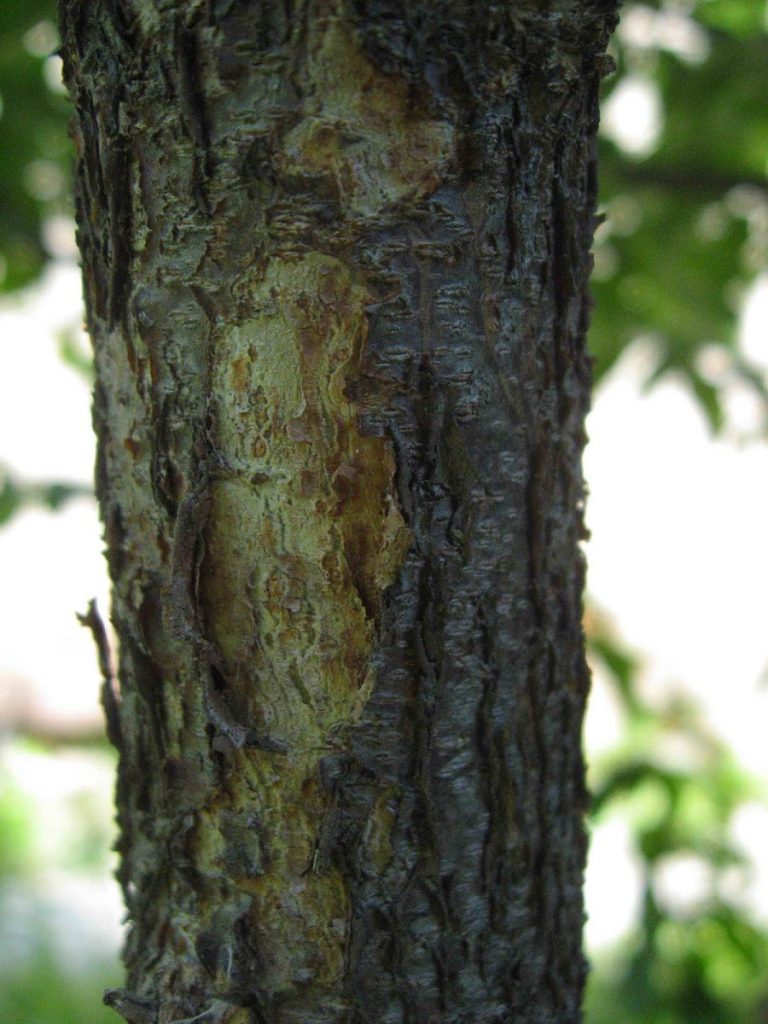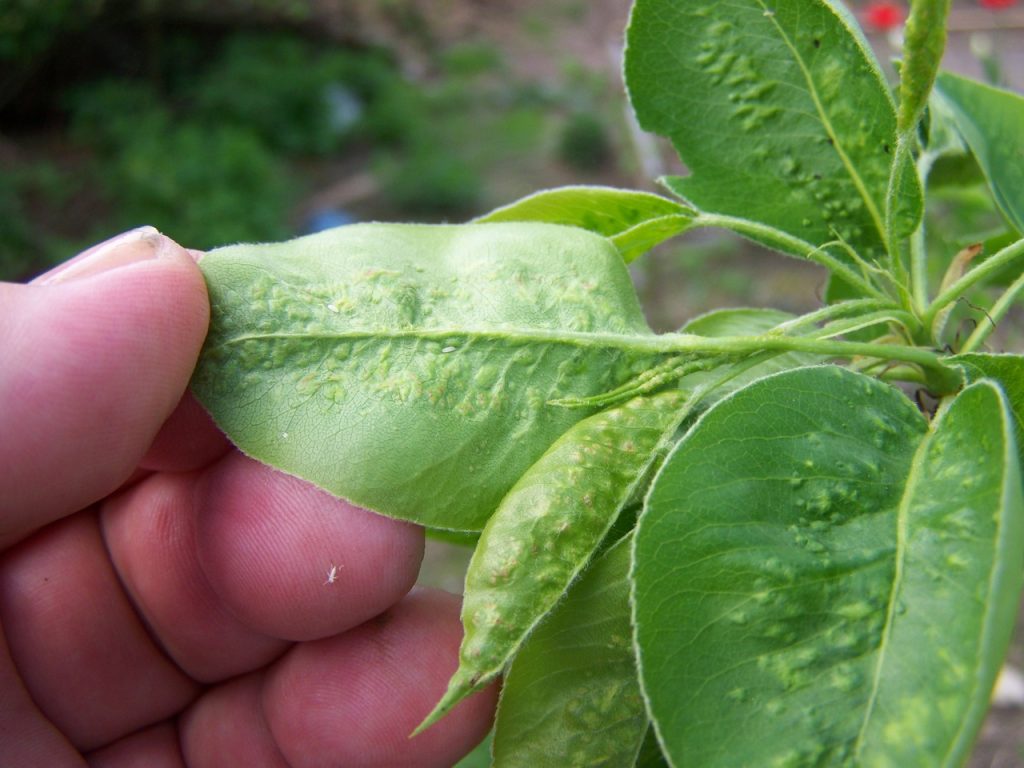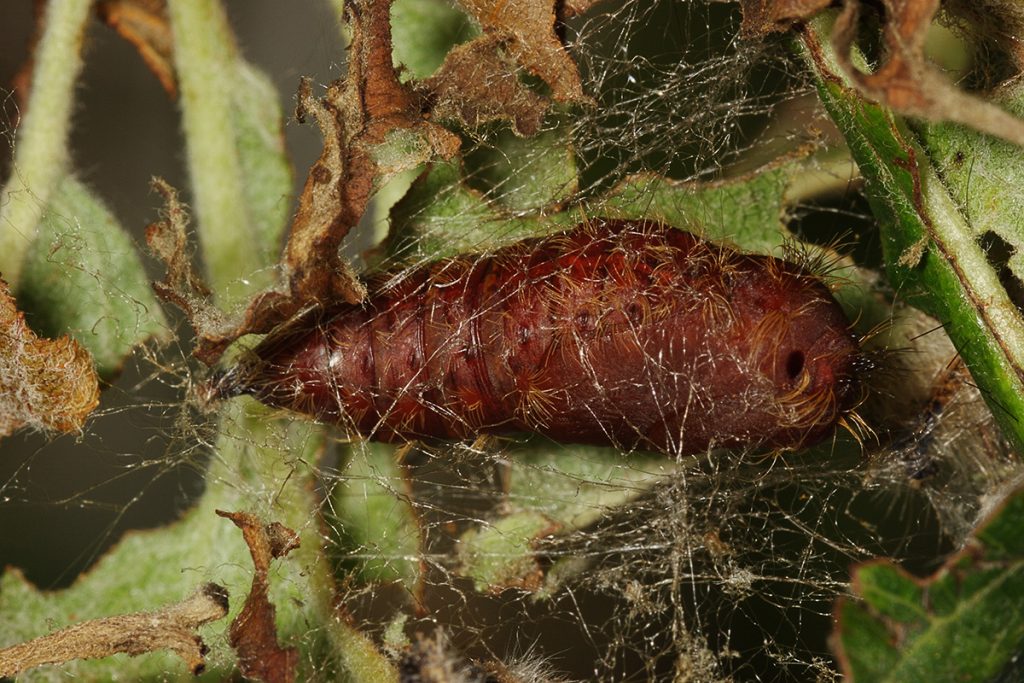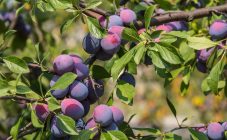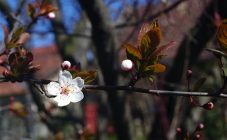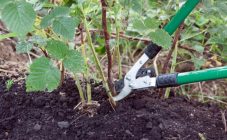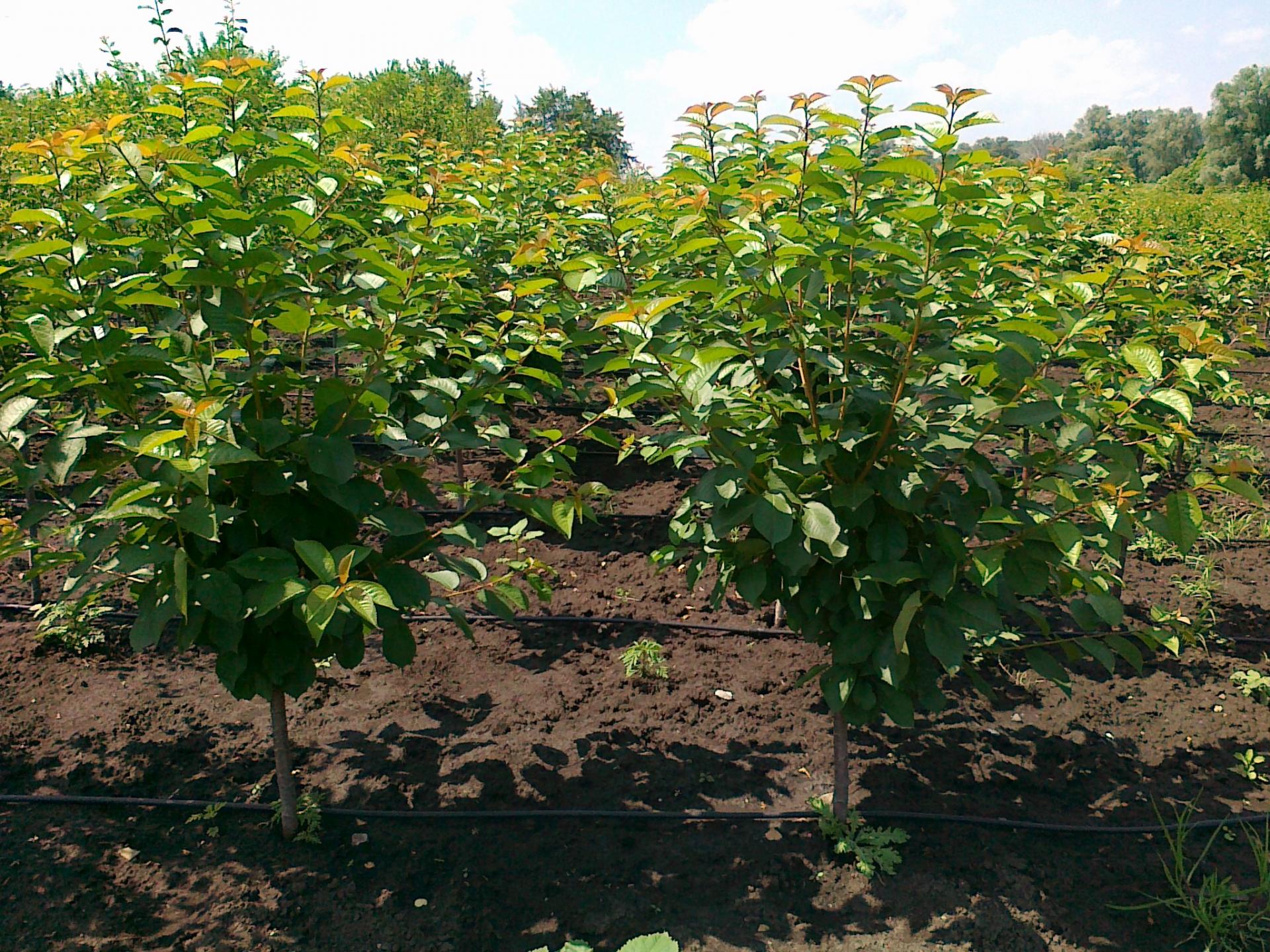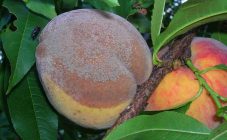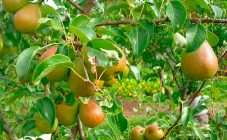Content:
To get a rich harvest of tasty and healthy fruits, you need a healthy tree. Often, summer residents face problems - these are plum diseases and harmful insects that can destroy a garden plot.
A fruit tree is subject to disease like a living organism. The plum is affected by the pathogenic flora:
- bacterial;
- fungal;
- viral.
Trees also suffer from non-communicable diseases. Failure to take measures to protect plums from illness is the cause of crop failure, and sometimes the death of the garden plot.
The most common plum diseases include the following.
Moniliosis
Signs of illness
Plum moniliosis is a rather dangerous ailment. The people call it fruit or gray rot. The root cause of the disease is a fungus that hibernates on branches and fruits. It is easy to find an ailment on a plum: buds and flowers, foliage and branches are affected. The shoots have a brown color. They wither and look like burnt ones. Damaged shoots suffer more. Then gray outgrowths form on the bark. The foliage turns black. The berries do not dry out.
At the second stage, the fruits are sick: a rotting spot appears on the surface, gradually spreading throughout the whole fruit. Cushions of fungal spores form on the spot, which infect everything. The berries damaged by moniliosis rot in an instant. Further, fruit shedding and drying of branches occurs. The progression of the disease provokes the death of the tree.
Fighting the disease
Iron or copper sulfate (1%) is used, effectively using the Bordeaux mixture (1%). The plantings are processed before flowering, as well as after it.
Cleaning and destruction of diseased fruits are required, as well as processing of cultures with Bordeaux liquid (1%). In the treatment of plum moniliosis, the drug Skor is used.
Preventive measures
Prevention measures contain:
- collection and destruction of fallen leaves, fruits, branches;
- battle with parasites;
- whitewashing the trunk;
- repairing wounds and other defects.
In October, during the fall of leaves, the plantings are treated with 3% Bordeaux mixture.
The following varieties are resistant to moniliosis:
- Hungary;
- Edinburgh;
- Reward.
Gum therapy
Gum therapy does not apply to infectious phyto-diseases. Often appears on frozen or sick trees. Sometimes gum flow causes acidity or excessive moisture in the soil. Sometimes the disease is observed in the dacha plots of novice gardeners, which was incorrectly fed.
Signs of illness
Symptoms indicate an ailment: the appearance of drops of gum or resin.Gum removal is fraught with loss of aesthetic appearance and plant infection through wounds.
Fighting the disease
If gum leakage is detected at the plum, treatment begins with stripping and disinfection with copper sulfate (1%). For stability of the result, after a couple of hours, rub the wound with sorrel leaves, this is done several times.
At the end, the wound is treated with garden pitch.
Preventive measures
To prevent the release of gum by plums, proper care of fruit trees is important:
- watering in moderation;
- avoidance of fertilizer overdose;
- lubrication of wounds with garden varnish after formative and sanitary pruning.
Sharka
In terms of harmfulness and negative impact on the efficiency of plum cultivation, this disease is equated with pear and apple scab. Fruit ripening a month ahead of time, shedding or drying on a tree - we are talking about a plum ball.
Signs of illness
Sharka symptoms include spots on young leaves that resemble winding lines or rings. Inspection of the leaves in the light allows you to better see the spotting. Failure to take action leads to marbling of the leaves.
Diseased fruits look like leaves: with noticeable specks, rings, stripes. The fruit pulp is characterized by:
- density:
- reddish brown tint;
- inedibility.
Fighting the disease
The virus is the causative agent of a dangerous disease that does not respond to treatment. Diseased plants are removed from the garden.
Preventive measures
To avoid the appearance of the disease will help:
- using clean garden tools;
- healthy planting material;
- timely destruction of sucking harmful insects that spread the infection.
Rust
Experienced gardeners monitor the condition of plum leaves from the middle of the summer season: the time of the first spots.
Signs of illness
For fungal pathology, rusty specks are typical, which are located between the veins on the sheets. Then pillows with fungal spores appear in their place. The foliage does not fall off in time, the plum weakens and loses its immunity and cold resistance.
Fighting the disease
They fight rust with the help of copper oxychloride: you will need 40 g of funds for 5 liters of liquid, consumption for 1 seedling is 3 liters. After harvesting, use Bordeaux mixture (1%) or other fungicides.
The appearance of spots is a signal for processing a tree in the middle of summer. Reoperation is performed every 2 weeks until the ripening of the fruit begins.
Preventive measures
To protect the plum from disease, they collect and burn fallen leaves, as well as dig up the earth in the trunk circle.
Clasterosporium disease
The disease gives rise to a fungus that hibernates on branches, buds or in wounds.
Signs of illness
Manifestations of clasterosporium: brown-grayish spots with a crimson edging in the shape of an oval on the foliage. The diameter of the spots is 4-5 mm. After a week and a half, they dry out, then they crack, leaving holes through and through. The number of spots causes drying and falling of leaves. When the tissue of the infected shoot bursts, a sticky gum oozes, which flows down the branch and solidifies like a glassy mass. The affected branches dry up.
Fighting the disease
Clasterosporiosis is fought by spraying stone fruit crops with a Bordeaux mixture (1%) during bud break and at the budding stage. Subsequent treatment with this agent - after flowering. The last time plums are processed 3 weeks before harvesting.
If the branches are severely affected, the plants are additionally treated after the leaves have fallen off with a 3% Bordeaux mixture.
Preventive measures
Preventive measures include:
- cleaning and liquidation of dead leaves and fruits;
- digging up soil in the near-trunk area;
- removal of infected shoots;
- isolation of wounds with garden varnish with mandatory preliminary cleaning and treatment with copper sulfate.
Coccomycosis
Sometimes the death of a plant occurs due to an incorrectly established diagnosis or non-treatment of plum coccomycosis. It is often found in the Leningrad region.
Signs of illness
The cause of the fungal disease is Coccomyces hiemalis, which affects all varieties of stone fruits. The disease manifests itself in June: at the top, the leaves are covered with small brown spots, and on the lower part - with a pinkish powdery bloom.
Fighting the disease
Coccomycosis will be cured by fungicides Abiga-peak and Horus. Effectively processing with a solution of lime, which is prepared from 100 g of the product per 10 liters of liquid. Planting is sprayed with bud break.
Preventive measures
You will need to carefully clean the area and get rid of plant waste: the fungus spreads easily thanks to the wind.
They are immune to disease varieties:
- Dasha;
- Alyonushka;
- Bogatyrskaya.
Polystygmosis
The causative agent is a fungus that burns plum foliage. A fungal infection usually affects the tree in the last decade of May, subject to high humidity.
Signs of illness
External manifestations: the appearance of red dots on plum leaves, their drying out and dying off, indicate a fungal infection.
Fighting the disease
If symptoms are detected, cultures and soil in the peri-stem zone are treated with copper sulfate (1%) until the development of the kidneys. Fungicidal powders are suitable: Topaz or Oxyhom.
The plantings are sprayed before flowering, at the end, and also after harvesting.
Preventive measures
To protect plums from fungus, it is important to clear the garden of vegetation residues in time and burn fallen leaves in the fall - a source of harmful fungus.
They stand out for their resistance to polystygmosis varieties:
- Hungarian;
- Ochakovskaya;
- Renclaude Altana;
- Green.
Milky shine
The name is deceiving - phyto-disease harms the culture.
Signs of illness
Symptoms of the disease:
- silver tint of leaves;
- air cavities in tissues.
Like other fungal infections, the milky sheen likes damp wet weather, damaged crops are ideal for settling.
The veins and the end border of the leaf die. Brown spots appear on the trunk and shoots. Later, the bark turns dark and falls off in stripes. As a result - the death of the tree. The activity of the fungus is observed when the plum is in the resting stage.
Fighting the disease
Summer residents are looking for information on measures to combat the milky sheen of plums. We'll have to upset - the ailment cannot be treated, only preventive measures are possible.
Preventive measures
Protection of plums against milky shine includes:
- treatment of wounds after winter pruning;
- avoiding poplar plantings near the plum;
- quality material for planting;
- whitewashing the trunk in the fall;
- quality of vaccination.
Marsupial disease
Fungal infection is characterized by overgrowth of fruit without pitting.
Signs of illness
A waxy powdery coating with a white tint forms on the surface of the plums. Spores of the fungus or its mycelium are easy to find in the scales of the buds or on the branches.
Fighting the disease
Plum is sprayed in early spring and after harvesting with Bordeaux liquid (3%).
Preventive measures
Carrying out sanitary cuttings, liquidation of plant waste.
Cracks in the bark
There are many reasons that explain why the bark of a plum is cracking on the trunk. These include:
- frosts;
- rapid development of the tree;
- harmful insects;
- phyto-diseases;
- sunburn;
- excess feeding;
- rodents;
- pruning injuries;
- high yield.
Harm
Cracks threaten the health of trees, are a refuge for viruses, microbes, bacteria that provoke diseases.
A crack in a tree trunk is like a wound on human skin; failure to take timely action will cause the infection to grow and multiply.
Crack treatment
Use a stiff brush to scrub off the affected bark, which is later burnt. For other wounds, a garden var will come in handy.
When the bark bursts, a solution of ferrous sulfate is prepared. The contents of the package are dissolved in lukewarm water and brought to a creamy state.
The bark is treated with a solution, which exfoliated. At the end of the spring season or with the arrival of summer, surgery is performed on wounds if the affected areas are removed.
Plums are affected by both diseases and pests.
Plum aphid
The result of the work of aphids is a shriveled plum.
Signs of defeat
Twisted and wrinkled leaves appear on the young branches of the plum. The plum aphid also does not bypass apricots, peaches, almonds. Where parasites live, the leaves wrinkle, turn yellow and fall off.
Localization of pests on the back of the leaf, as indicated by a whitish bloom. Soon, a sooty mushroom settles on branches that turn black. Aphids lay eggs next to buds and in microcracks on plum bark.
Pest control
Popular ways to combat aphids include:
- spraying with Decis (0.1%) or Aktara (0.1%) buds, which bloom in spring;
- treatment of plums with Iskra: for 10 liters of water - 1 tablet;
- watering with Intavir eliminates both aphids and weevils;
- karbofos emulsion: for 10 liters of liquid - 30 g of the drug.
Preventive measures
Pruning affected shoots will have a positive impact on the plant. Gardeners note the ineffectiveness of folk remedies in the fight against aphids.
Gall mite
The growths or tubercles, which are specific to the plum leaves, which resemble warts, indicate the defeat of the plant by a gall mite. The pest sucks the juices from the culture, releasing toxic substances.
Toxins paralyze leaves, slow down growth and cause deformation: the formation of chambers, or galls. There, the parasites hatch offspring three times per season, which will quickly disperse around the garden.
Signs of defeat
First, a soft, light fluff appears, which cannot be removed with a finger. Then the plaque will darken. Outside, bumps-warts form on the leaves. The color of the leaf blades varies from yellow to brown. This is followed by their fall.
Pest control
Acaricides help kill ticks. Use:
- Aktofit or Kaput;
- Aktelik or Nero.
The procedure is repeated several times after a week. Effectiveness will be noticeable after 21 days. Sulfur-containing products are also useful.
Preventive measures
Cutting and burning of affected branches is recommended.
Unpaired silkworm
Harmful to fruit plants.
Signs of defeat
Large caterpillars with warts on their backs climb up the tree and destroy leaves in their path. Eggs are laid on a sink or fence that is nearby.
Pest control
Scrape off the eggs with a knife. If treated with kerosene, an effective result is expected. Spray the plum before and after flowering.
Care and prevention
Harmful insects, together with plum diseases, harm crops, reduce yields, weaken plants, and sometimes even lead to death. Just right to use agricultural techniques, as well as chemicals.
- The beginning of the spring season (until the buds swell). Pruning and removing diseased branches. For cracks from frost, cuts, a garden pitch is useful. The earth is dug up in the near-stem zone. Spraying plums with nitrofen (3%).
- Flowering phase. Refuse to spray chemicals. A flowering culture is sprayed with a honey solution (for 10 liters of water - 30 g) with micronutrient fertilizers (1 tablet or 1 tbsp per bucket of liquid).
- Post-flowering stage (before ripening). They are treated with a mixture of chlorophos (0.2%), vitriol (0.4%), copper with chlorine oxide (0.5%).
- Ripening stage. Collection and elimination of the infected ovary.
- Post-harvest period. The tree is carefully examined. Wounds are healed and sprinkled with a mustard-garlic solution with ash, the addition of 50 g of mineral fertilizers and a micronutrient tablet for 10 liters of liquid.
- Autumn-winter season.Removal of weeds, fallen leaves, whitewashing of trunks, digging up the earth around the plum.
- Late fall. Repeated whitewashing of boles, which are wrapped with spruce branches, roofing felt, transparent film or roofing material.
It is advisable that the events are of a permanent nature. When the plum is shriveled or infected with worms, curliness in the area next to it, it is time to take urgent measures and carry out the garden processing. A description of plum and pest diseases will help determine the methods of control.

